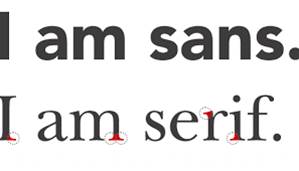The key notes from the lesson are here:
General
- Tatler is Britain’s oldest magazine (founded in 1901).
- Targeted at upper classes and upper-middle classes.
- Lifestyle magazine with focus on fashion; high society events such as balls and celebrities such as the Royal family and members of the aristocracy (people with inherited wealth, titles and land.)
- There are versions in Russia, Hong Kong and Indonesia.
- Over the years, Tatler has remained interested in the lives of the Royal family, but has tried to re-invent itself as more ‘edgy’ and modern in recent years, to try and target a younger audience.
Media language
- This refers to how the producers communicate their message to the audience through the media text.
- Mise-en-scene: what you see - remember CLAMPS (Costume / Lighting / Actors / Make-up / Props / Setting)
- Typography / Fonts: serif title and sans serif cover lines.
- Words used and their connotations.
- Colour schemes: usually two or three in a magazine. Sometimes title matches or is juxtaposed with colours elsewhere on the cover.
Representations
- Tend to reflect dominant representations/stereotypes on cover image: predominantly white, predominantly female, predominantly wealthy (or associated with wealth such as this actress who plays a role in Downton Abbey).
- Average age of reader is 41 but the cover tends to focus on celebrities or models who are younger than this (due to dominant ideals of beauty in the Media).
- Cover lines (stories inside) tend to focus on preoccupations of upper classes e.g ‘How to get your son into Eton’- an exclusive and very expensive private school.
Social and cultural contexts
- The issues that Tatler is concerned with tend to be political but not in a particularly gritty way because the magazine is more interested in fashion, merchandise, beauty and ‘lifestyle’ rather than dealing with news in any depth.
- The preoccupation with parties, private schools, luxury holidays and exclusivity (the ‘Tatler Privilege Club’) assumes a high level of income and an elitist attitude which may alienate or offend people from a different social class. 81% of the readership has an above average income. 44% buy shoes or clothes more than once a month so the cultural context of the magazine could be judged as ‘niche’ (for the few) rather than ‘mainstream’ (for everyone).
- Some of the stories can be seen as out-dated as they are concerned with riding, hunting and shooting which are pursuits generally only enjoyed by higher classes.
Work through the following tasks and questions to build a detailed case study for Tatler issue April 2017 (below). This will give you plenty of background information to use in an exam question on print magazines.
Introduction - Tatler Media pack
1) Look at the Tatler Media Pack. Go to page 2: how does the editor introduce the magazine?
2) Now go to page 4 of the Media Pack. Focus on the print magazine (NOT tatler.com - the website). List the key demographic details: age, gender %, ABC1 % (social class), HHI (Household Income), % of those living in London and the South East. What do these demographic details suggest about the average Tatler reader?
3) Look at page 6. What do Tatler readers think about fashion? How much do they spend?
4) Go to page 10. What are the special editions of Tatler that run throughout the year? What does this suggest about the pyschographic groups who read Tatler?
Media language
Revise the 12 magazine cover key conventions and check how many feature on this edition of Tatler.
1) What different examples of typography can you find on the cover of Tatler? What are the connotations of the serif and sans serif fonts?
3) What are the connotations of the Tatler colour scheme on this particular front cover?
4) How is the central image designed to create interest in the magazine? Find three reasons for your answer. (E.g. Mise-en-scene such as props, costume and make-up, body position, facial expression)
Representations
1) What different groups of people are represented on the cover? (E.g. men/women/white people etc. Look at the image and text/cover lines to help here)
3) Are there any stereotypes being reinforced or subverted? How? Why?
4) What would be the preferred and oppositional readings to this cover of Tatler?
Social and cultural context
1) What aspects of British life or people are NOT reflected in Tatler? (Watch the clip above again if you need help with this - the clue is in the title 'Posh People')
2) Tatler runs special issues on holidays, spa breaks, cosmetic surgery, watches and jewellery and private schools. What does this suggest about the magazine's representation of life in Britain?
3) What audience groups might be offended or insulted by the front cover of Tatler April 2017?
4) Find three other front covers for Tatler. What issues, subjects or people are regularly featured in Tatler?
Grade 8/9 extension tasks
1) Are there any misrepresentations or under-representations of groups? What might this suggest about the target audience?
2) How does the front cover engage audiences with possible narratives? Look for stories, cliffhangers, dramatic cover lines etc.
3) What does the costume and make-up in the central image suggest about the character featured on the front cover of the April 2017 edition of Tatler?
4) Read this Guardian article on the BBC documentary about Tatler called Posh People. What does the article suggest about the people who produce and read Tatler?
Complete for homework - due Thursday 7 February.






